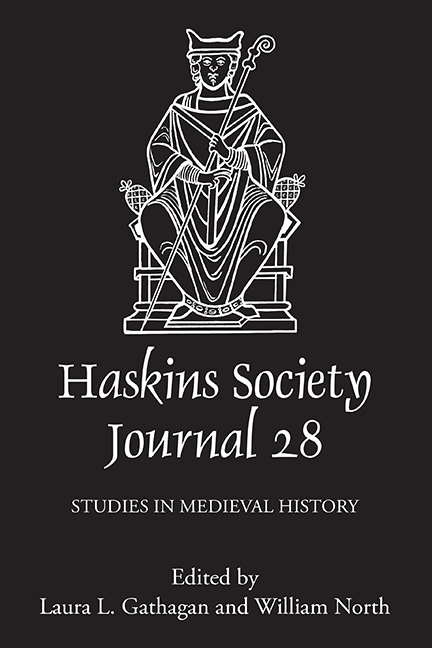Book contents
- Frontmatter
- Contents
- List of Figures and Tables
- Editors' Note
- Abbreviations
- 1 Under the ‘Romans’ or under the Franks? Venice between Two Empires
- 2 Lost and Found: Eadmer's De reliquiis sancti Audoeni as a Cross–Channel Solution to the Canterbury–York Dispute
- 3 Of Lost Libraries and Monastic Memories: Creating the Eleventh-Century Novalesa Miscellany
- 4 The Place of Henry I in English Legal History
- 5 ‘Goliath Thought David Rather Boastful’: Royal Masculinity in Kingless Societies
- 6 Well-Behaved Women? Agnès of Baudement and Agnès of Braine as Female Lords and Patrons of the Premonstratensian Order
- 7 ‘Videmus nunc per speculum’: The Mysticism and Naturalism of the Twelfth-Century imago mundi
- 8 The Norman Kings of Africa?
- 9 Punishing Adultery: Private Violence, Public Honor, Literature, and the Law
7 - ‘Videmus nunc per speculum’: The Mysticism and Naturalism of the Twelfth-Century imago mundi
Published online by Cambridge University Press: 23 August 2019
- Frontmatter
- Contents
- List of Figures and Tables
- Editors' Note
- Abbreviations
- 1 Under the ‘Romans’ or under the Franks? Venice between Two Empires
- 2 Lost and Found: Eadmer's De reliquiis sancti Audoeni as a Cross–Channel Solution to the Canterbury–York Dispute
- 3 Of Lost Libraries and Monastic Memories: Creating the Eleventh-Century Novalesa Miscellany
- 4 The Place of Henry I in English Legal History
- 5 ‘Goliath Thought David Rather Boastful’: Royal Masculinity in Kingless Societies
- 6 Well-Behaved Women? Agnès of Baudement and Agnès of Braine as Female Lords and Patrons of the Premonstratensian Order
- 7 ‘Videmus nunc per speculum’: The Mysticism and Naturalism of the Twelfth-Century imago mundi
- 8 The Norman Kings of Africa?
- 9 Punishing Adultery: Private Violence, Public Honor, Literature, and the Law
Summary
In the twelfth century, there was an explosion of Latin encyclopedic investigations, which became the inspiration for a whole series of later Latin and vernacular treatises (known by such titles as Imago, Speculum, Trésor, Tesoretto, L'image, Mirroir, and Glasse). Over the next centuries there were ‘mirrors’ to advise princes; ‘glasses’, ‘conteinying the pleasant Principles of Cosmographie, Geographie, Hydrographie, or Navigation’, as noted in William Cunningham's 1559 Cosmographical Glasse; and specula, ‘representing the face of the world shewing both that it did begin, and must also end: the manner how, and time when, being largely examined’, as John Swan's Speculum Mundi put it in the seventeenth century; all testimony to the enduring popularity of the genre. Some ‘glasses’ could help the sinner repent, holding up to his gaze a mirror which revealed the imaginary nature of the vain pleasures he sought; others helped by providing a clear vision of the sinner to himself. At the root of almost all of these imagines, though, was the biblical ‘videmus nunc per speculum in aenigmate’ (Romans 1:20). The vision we enjoy here is analogous to that provided by an old glass mirror that warps what it reflects. However, exactly what the mirror was held up to, or in what sense it was thought to provide a reflection, varied from work to work.
In this paper, I will focus on certain twelfth-century texts that aimed to deal with the world comprehensively. And although the understanding of ‘comprehensive’ and the methodology employed to attain it also varied from author to author, even within the same century, we nevertheless find persistently throughout the twelfth century an earnest desire to sketch pictures of the physical face of the whole of creation, to draw together into a unified presentation the totality of the world's plants, animals, climes, weathers, elements, harmonies, proportions, ligatures, connections – as if viewing the cosmos from above. Such an interest in exploring the world according to the laws of physica has been identified as a major cultural moment in the West, and has been called ‘the Discovery of Nature’ by Andreas Speer.
- Type
- Chapter
- Information
- The Haskins Society JournalStudies in Medieval History, pp. 119 - 142Publisher: Boydell & BrewerPrint publication year: 2017

